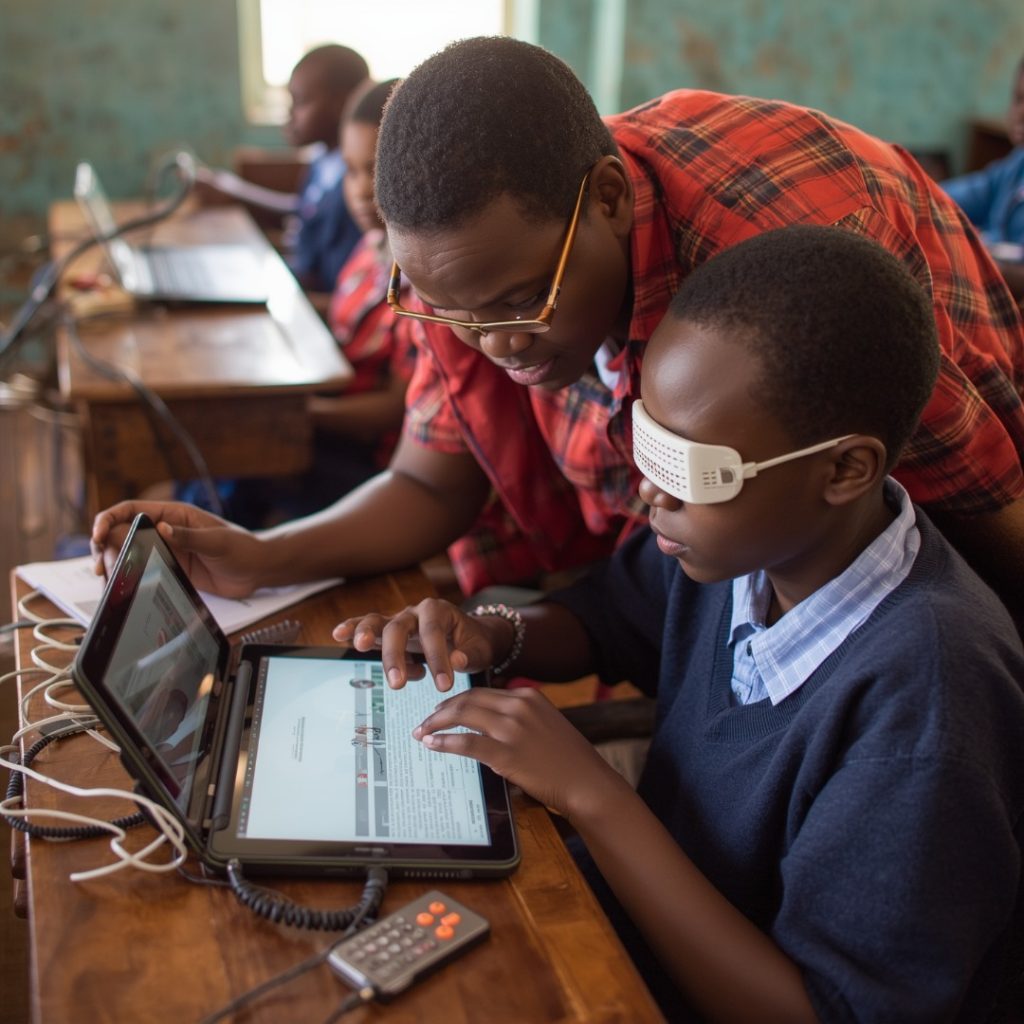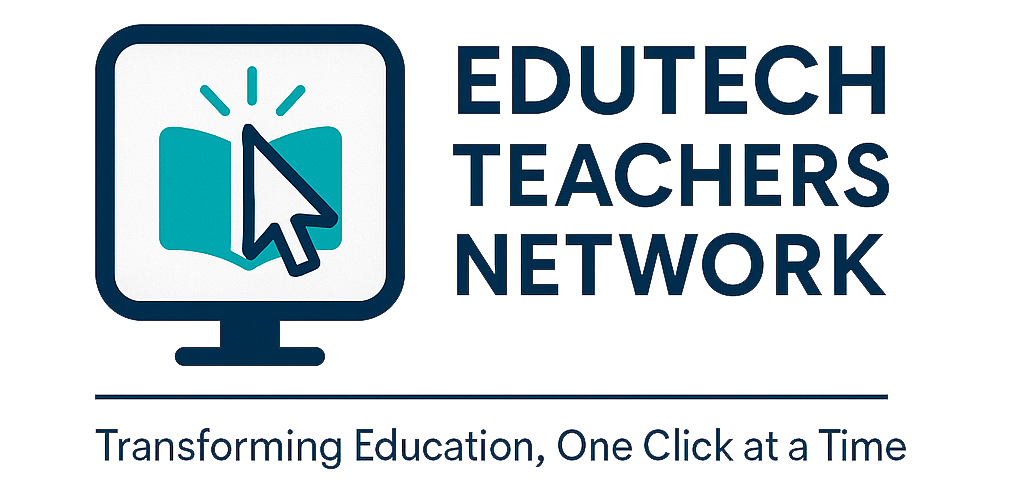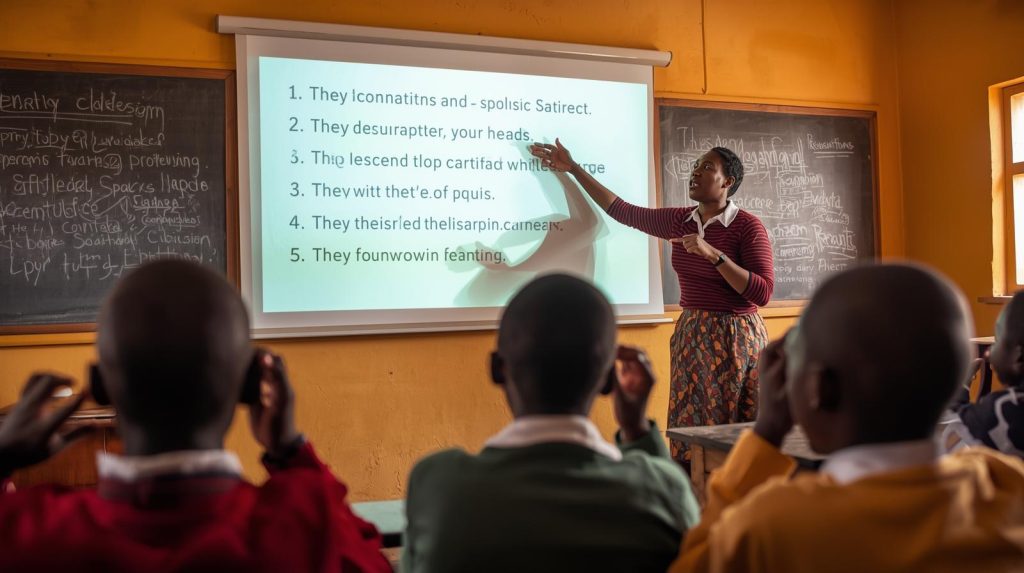In the vast and diverse landscape of African education, where classrooms often buzz with the energy of young minds eager to learn, a quiet revolution is underway. Assistive technologies tools designed to bridge gaps for learners with disabilities are reshaping how teachers in Uganda and across the continent deliver inclusive education. Imagine a young girl in a rural Ugandan school, her vision impaired, now able to “read” her textbooks through a simple screen reader app on a shared tablet. Or a boy in Kenya with hearing challenges participating in group discussions via real-time captioning software projected on a classroom screen. These are not distant dreams but real transformations happening today, fueled by innovative technologies and dedicated educators.
As members of the Edutech Teachers Network, we recognize that special needs education (SNE) is not just about accommodation; it’s about empowerment. Founded on the principles of inclusivity and innovation, our network born from grassroots efforts like those of Shareability Uganda equips teachers with the skills to integrate these tools effectively. Drawing from our core values of empowerment and collaboration, this article explores how assistive technologies are revolutionizing SNE in Africa. We’ll delve into key tools, local success stories from Uganda and beyond, challenges faced, and practical strategies for implementation. By the end, you’ll see why embracing these technologies is essential for building equitable classrooms that prepare all learners for a digital future.
In line with our mission to foster professional learning communities, this piece builds on earlier articles like “Inclusive ICT Tools for Learners with Visual and Hearing Impairments,” offering deeper insights into practical applications. For those new to this, consider Module 2 of the Sharebility EduTech Course, which covers foundations of digital pedagogy tailored for SNE.
The Landscape of Special Needs Education in Africa: Challenges and Opportunities
Africa’s education sector is a tapestry of resilience and resourcefulness, yet it grapples with significant hurdles in SNE. According to UNESCO reports from 2024, over 30 million children with disabilities across the continent are out of school, often due to inadequate infrastructure, teacher training, and accessible tools. In Uganda, the Ministry of Education and Sports estimates that only 10% of learners with disabilities access quality education, exacerbated by rural-urban divides and limited funding. https://www.youtube.com/watch?v=Ojk3gUCtg7c&authuser=0
However, assistive technologies offer a beacon of hope. These include hardware like braille displays and software such as text-to-speech converters, all increasingly affordable thanks to open-source innovations and mobile proliferation. In Nigeria, for instance, low-cost apps like those developed by local startups are helping teachers adapt curricula for neurodiverse learners. Uganda’s own initiatives, such as the government’s push for inclusive ICT under the National ICT Policy 2023, align with global standards like the UN Convention on the Rights of Persons with Disabilities.
What makes these technologies transformative? They shift education from exclusion to participation. A teacher in Kampala shared how introducing voice-activated software turned a silent classroom corner into a hub of interaction for a student with motor impairments. Such stories highlight the potential: with smartphones now in over 50% of African households (GSMA 2025 data), mobile-based assistive tools can democratize access.
Key Assistive Technologies for Visual Impairments
Visual impairments affect millions of African learners, but technologies are bridging this gap. Screen readers like NVDA (NonVisual Desktop Access), a free open-source tool, convert text to speech, allowing students to navigate digital content independently. In Uganda, schools partnered with organizations like Sight Savers International have distributed NVDA-equipped laptops, enabling visually impaired students to access e-books from the National Curriculum Development Centre.
Another game-changer is optical character recognition (OCR) apps, such as Seeing AI by Microsoft, which scans printed text and reads it aloud. Teachers in Ethiopia report using it to digitize handwritten notes, making lessons inclusive for low-vision pupils. For tactile learners, refreshable braille displays like the Orbit Reader 20 connect to smartphones, translating digital text into braille. A Ugandan educator in Gulu described how this device helped a blind student excel in mathematics by “feeling” equations in real-time.

To illustrate the impact, consider this table of popular tools blow:
| Technology | Description | Cost Range (USD) | African Examples |
| NVDA Screen Reader | Free software that reads screen content aloud | Free | Widely used in South African and Ugandan inclusive schools |
| Orbit Reader 20 | Orbit Reader 20 | 200-500 | Piloted in Ugandan rural SNE centers for math and literacy |
| Seeing AI App | Mobile app for text recognition and object description | Free | Adopted in Kenyan urban classrooms for daily reading tasks |
These tools not only enhance access but foster independence, aligning with our network’s emphasis on lifelong learning.
Assistive Technologies for Hearing Impairments
For learners with hearing challenges, auditory technologies are vital. Real-time captioning tools like Google Live Transcribe provide instant subtitles during lessons, turning spoken words into text on a shared screen. In Rwanda, post-genocide education reforms have integrated this into classrooms, helping deaf students follow lectures seamlessly.
Sign language avatars, powered by AI like those in the SignAll platform, animate signs for complex concepts. A teacher in Zambia recounted using it to explain scientific terms, boosting comprehension among signing students. FM systems, which amplify teacher voices directly to hearing aids, remain essential in noisy African classrooms. Uganda’s Mbale School for the Deaf has seen attendance rise after adopting affordable FM kits from local suppliers.
“Breaking sound barriers in African education.”
Here’s a tabulated overview:
| Technology | Description | Cost Range (USD) | African Examples |
| Google Live Transcribe | App for live speech-to-text | Free | Used in Tanzanian schools for group discussions |
| SignAll AI Avatars | Virtual sign language interpreters | 50-200/year | Emerging in Ugandan urban SNE programs |
| FM Hearing Systems | Wireless audio amplification | 100-300 | Standard in South African inclusive setups |
These innovations promote collaboration, echoing our network’s value of community.
Technologies for Cognitive and Learning Disabilities
Cognitive impairments, including dyslexia and autism, benefit from adaptive software. Mind mapping tools like XMind help organize thoughts visually, aiding students with ADHD in structuring essays. In Ghana, teachers use it to create interactive lesson plans, reducing overwhelm.
Text-to-speech (TTS) engines, such as NaturalReader, read aloud for dyslexic learners, improving reading fluency. A Ugandan story from Jinja: A student struggling with reading now leads class debates after regular TTS practice. For autism spectrum disorders, apps like Proloquo2Go offer picture-based communication, facilitating expression in non-verbal children.
Table of tools:
| Technology | Description | Cost Range (USD) | African Examples |
| XMind | Mind mapping for idea organization | Free Premium 60/year | Popular in Nigerian special education centers |
| NaturalReader TTS | Converts text to natural-sounding speech | Free/Basic | Integrated into Moroccan literacy programs |
| Proloquo2Go | Symbol-based AAC app | 250 (one-time) | Adopted in Ugandan autism support groups |
Technologies for Physical and Motor Impairments
Physical disabilities require adaptive input devices. Eye-tracking software like Tobii Dynavox allows control via gaze, empowering students with limited mobility. In Egypt, it’s used for art classes, letting paralyzed learners “paint” digitally.
Switch-access systems, simple buttons connected to tablets, enable navigation for those with motor challenges. A touching example from Uganda’s Lira district: A child with cerebral palsy now submits homework independently using a foot switch.
Overview table:
| Technology | Description | Cost Range (USD) | African Examples |
| Tobii Dynavox | Eye-gaze control system | 500-2000 | Piloted in Kenyan rehabilitation schools |
| Switch-Access Devices | Custom buttons for input | 50-200 | Common in Ugandan physical therapy-integrated education |
Implementation Strategies for Teachers in Uganda and Africa
Adopting these technologies requires strategy. Start with needs assessments, as outlined in our network’s workshops. Train via peer communities our Edutech Champions Program offers mentorship. Budget creatively: Partner with NGOs like UNICEF for grants.
Challenges like power outages? Solar-powered devices and offline apps mitigate this. In rural Uganda, teachers use battery-backed tablets for TTS lessons.
Building a Supportive Ecosystem: Role of Networks and Policies
The Edutech Teachers Network plays a pivotal role, offering webinars and exhibitions to showcase SNE tools. Align with policies like Uganda’s Inclusive Education Policy 2024.
I finally Conclude by saying, Assistive Technologies are not mere gadgets; they are lifelines transforming SNE in Africa. From Uganda’s classrooms to broader continental efforts, they embody our vision of empowered educators leading digital innovation. Join the Edutech Teachers Network today—together, we can ensure no learner is left behind. Let’s commit to inclusive education, one tech tool at a time.



Leave a Reply